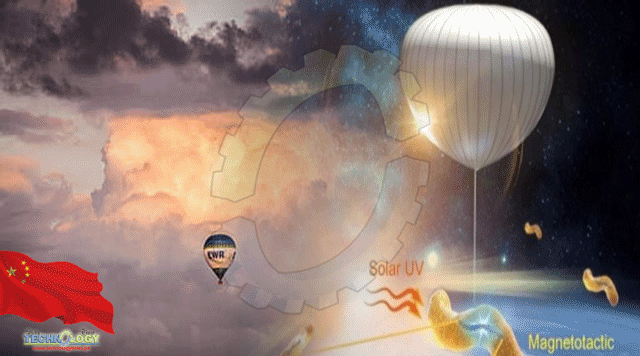A balloon-borne experiment in Earth’s near space designed by Chinese scientists is paving the way for better extraterrestrial life research.

A balloon-borne experiment in Earth’s near space designed by Chinese scientists is paving the way for better extraterrestrial life research.
Scientists from the Chinese Academy of Sciences have sent aloft the balloon platform they designed for the biological exposure experiment four times since 2019 in north China’s Inner Mongolia Autonomous Region and northwest China’s Qinghai Province, the first of its kind in the world.
They found that a part of one kind of magnetotactic bacteria has survived in the extreme environment about 23 kilometers above sea level.
The magnetotactic bacteria synthesize iron oxide nanoparticles called magnetosomes covered by biological material and use them as a compass to navigate in the direction of the earth’s magnetic field.
Other nonmagnetic bacterial strains died in the experiment, according to a study published recently in the journal Science Bulletin.
The near space of our planet — 20 to 100 kilometers above sea level — is characterized by high radiation, low pressure, coldness and dryness, resembling, to some extent, the Martian surface.
Further analysis revealed that the sizes, magnetic properties and magnetosome quantities of the surviving organisms were altered, presumably protecting them from the high radiation hazard.
The researchers speculated that the biological mineralization within bacterial cells can be one of the bacterial survival strategies on Mars.
To explore how organisms could or could not survive on Mars help us understand the alien’s potential survival strategy and interplanetary life transport, the researchers said.
Also, the balloon-borne platform may be used as an in-situ life probe in Venus’ atmosphere in the future, according to the study.
This news was originally published by Xinhua.